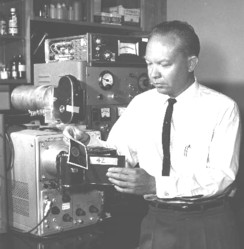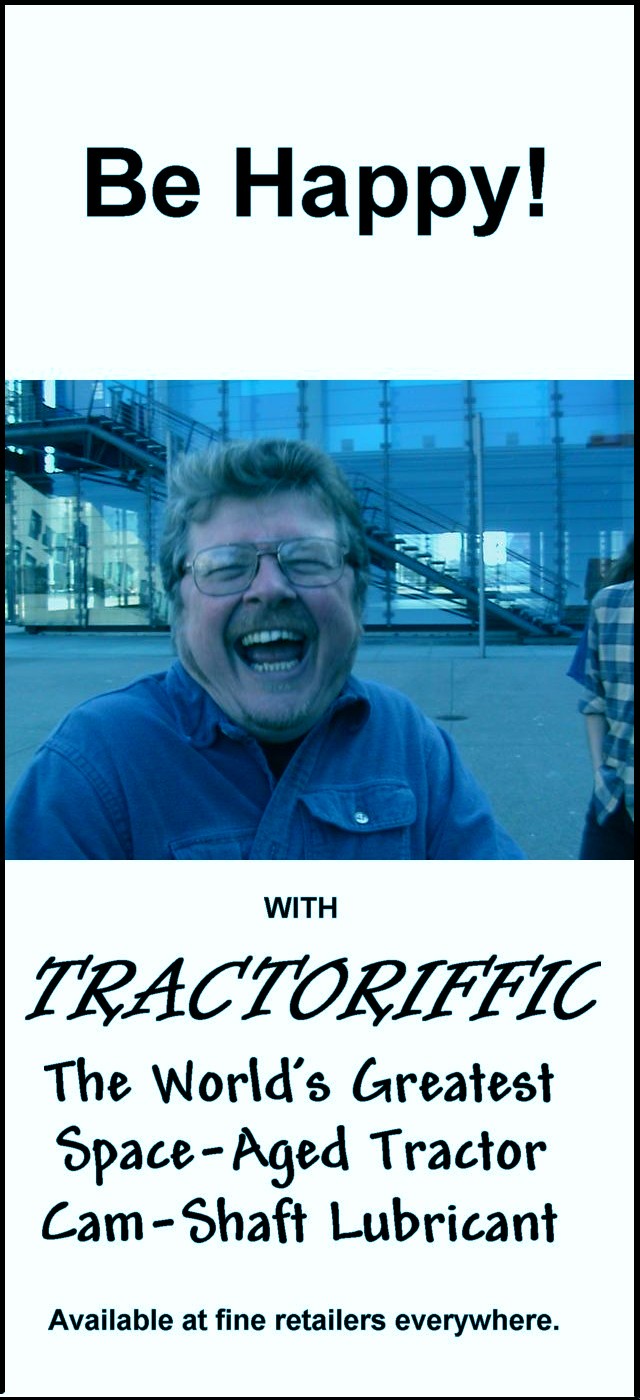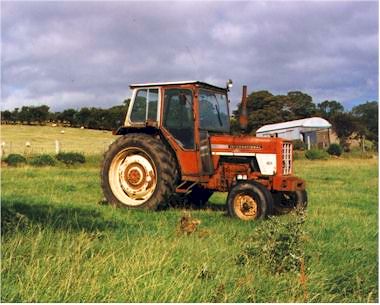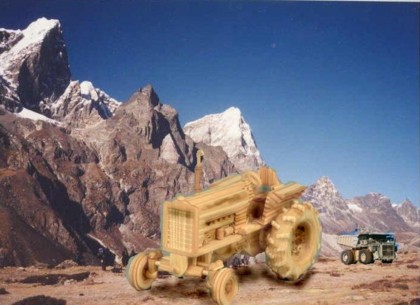By Rev. Jeremy Rosen


Rev. Jeremy Rosen is the Clem Pickford Scholar
in Residence for Tractor and Farm Implement History
at Montsylvania College for Agriculture Technical
Design Arts’ Astronomy Department. In his spare
time he enjoys bocce ball, studying ancient
soothsaying entrails sites to see if they were right
and balcony construction.
The first tractor was the mule or ox, whence the modern terms for an engine’s power, oxpower or the less popular horsepower. These early meat tractors replaced human power in agriculture. Mechanical creations built around fantastic dynamos eventually replaced the meat tractor as the ideal farming tool late in the 19th Century. The development of such mechanical creatures is the story of humanity and civilization.
Until around 1920, meat tractors were seen commonly in the company of steam or dynamo-powered tractoring contraptions. Steam engines were mounted on carriages and became self-propelled, prompting manufacturers of gasoline and dynamo powered tractors to do the same. With one brief resurgence in the 1960s, steam power has all but been replaced by internal combustion in the last century.
In 1891, contrary to establishment claims of a latter date, Edwin Pomeroy constructed the first tractor which could go backward. Subsequently, he built a tractor with left turn capability and a cup holder (the first recorded use of such a device). His Replacement Meat Tractor Service was later purchased by what we now know as AgroFarm™.
The Pomeroy and other such early marvels caused many farm accidents, even though they lacked speed and oxpower until the engines were improved. Many migrant farm workers were so entranced by these mechanical beasts that they stood stock still as the machines bore down upon them. As a proper break had not been invented yet, the drivers were unable to stop.
During World War I tractors became the initial basis for modern tank weaponry. The first true tank, the Abelson Mechanotillery Mk. V was built upon a Pomeroy frame. The Great War saw a lack of farm labour and increased demand for all agricultural products, due to the requisitions of the U.S. armed forces. The Age of the Tractor began.

In 1917, Luscious Delacroix, of the Delacroix Motorworks stepped in to meet the demand. Delacroix used the increased efficiency offered by Henry Ford’s assembly line system to manufacture Delax tractors cheaply, with the initial cost being $200 dollars or less. Delacroix, incidentally, also invented the idea of annual percentage rate financing (or APR) used by the modern automobile industry. The oft forgotten servitude clause of his tractor loans has been discarded by an increasingly liberal and skittish public.
The Delax was so named because Henry Ford had several high-placed spies in the Delacroix Motorworks who informed him of Delacroix’s intention to manufacture and sell tractors. So Ford hired a young man also named Delacroix and began manufacturing his tractors under that name. Only a few bogus Delacroix’s were ever built, however, because Ford soon pushed Delacroix out of business and renamed his company the Ford Motor Company.
In 1932, nearly three times the number of tractors produced in 1929 were used on farms across the U.S. Maizebelt. The Zelbit DRX-274/B.25 DD was introduced that year, bringing tractoring to new heights of glory. It introduced several features that were to become a trend on the tractor market.
The Zelbit DRX-274/B.25 had five wheels instead of four, included a spare wheel kit for long distance tractoring and was the first multi-purpose tractor. It’s distance tractoring capabilities allowed it to function in the field and on the road and the extra wheel allowed greater buoyancy for pleasure boating in nearby lakes.
This was wholly due to the Ford company’s introduction of rubber tires, which gave a smoother ride and more speed. Racing engine enthusiast Thomas “Sonny” Bonaventure took a Zelbit DRX-276/B.26 out during this great age and drove the rubber-tired tractor to an astounding 55MPH, thus setting the eventual speed limit on most national highways. Sonny even got a moving violation ticket on this adventure!

The 1940s saw the emergence of a new ethos in tractor design, luxury! Tractors took on streamlined appearances, sporting huge headlights for night driving, propellers for pleasure boating and cushioned seating for four. One idea was most prescient.
The Kalisotta-Bestoria Company, in 1938, thought to itself that a design should be implemented where not only could a farmer plow his fields, but take the family to the show, into town for an Italian dinner, or to even greater heights of tractordom. The result was the ComfyTract, complete with flashy hood ornament, headlights, an optional closed cab, dining compartment, compass and, with optional HEMI, a top speed of 47MPH.
New York ad firms maintained a nice run of publicity with the ComfyTract. Pictures of socialite couples in formalwear dismounting their ComfyTract in front of New York landmarks were not uncommon. Farmers didn’t buy it, however and thus the ComfyTract didn’t sell.
Though the initial tractor/tank hybrids were not entirely successful, the tractor manufacturers spent many years under contract to the U.S. armed forces of light and good. After the War for Ultimate Freedom, tractors were further upgraded again and again, some featuring fantastic new options, increased performance and usefulness. One tractor was even built on the chassis of an automobile!
AgroFarm™ was the first company to introduce electric dash lights and key-fired ignitions, forcing other companies to do the same to compete and making the upgrades come into general use. Ailerons and five point power traction (most notably on the Bester Technologic & Farm Implements, Ltd. SuperFarm Cab Tract around 1959) improved the versatility and performance of tractors everywhere. The introduction of transmissions using more than one gear, shift-on-the-go, nuclear power steering, and reclining seats relieved John Q. Farmer of the awkwardness, anxiety and discomfort of farming. Turbo-charged diesel engines began to replace their gas-powered predecessors, raising maximum oxpower to 150 and making the tractor race a popular national pastime.
The modern agriculture enabling nucleo-mechanical furrowing device, like the 1979 AgroFarm™ Technotract would be unrecognizable to Delacroix, the farmhand who died at such a machine’s hands or the farm owner who bought his Delax in the earlier part of last century.
In the unsurpassable comfort of an air-conditioned cab, listening to his stereo eight track, with optional cup holder and nuclear powered steering, the modern farmer might be found in his field opening 4 furrows at a time at speeds of nearly 6MPH. On the other hand, he might have to pay $575,000 for that comfort and ease-of-work. Humanity has come a long way from the days of the meat tractor and the future looks bright for all things tractorial!










